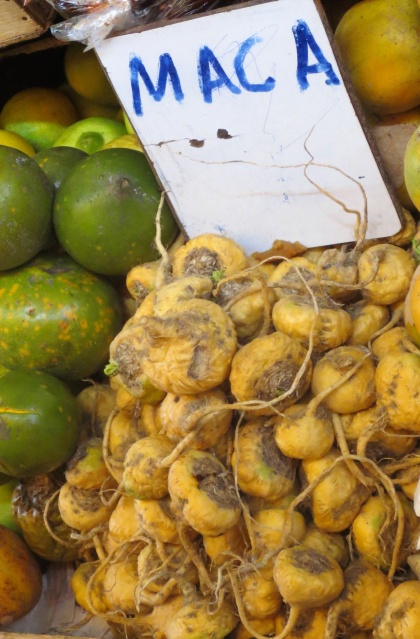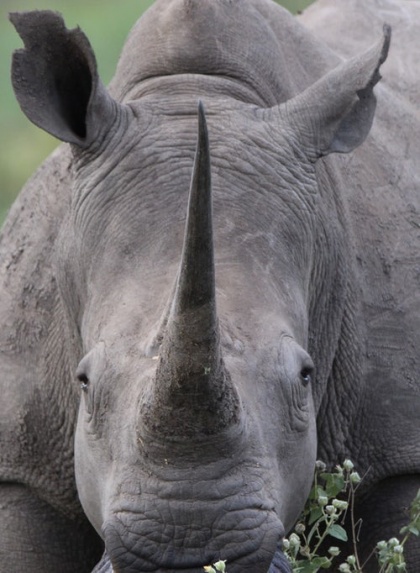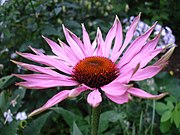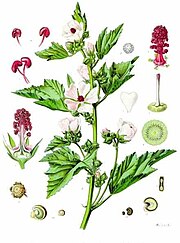Complementary medicine/CMT101/Environmental issues of CAM use 1: sourcing and supply
It is often assumed that all-natural products are earth-friendly, by any time we use a natural product, we are contributing to a greener future. We challenge these assumptions and encourage a critical approach to our consumption of complementary medicines.
When we are talking about natural products, particularly medicinal plants and marine products (including fish oils, krill and seaweed products), we are referring to products that are gathered or cultivated rather than being produced in factories. Many are harvested in the wild, that is, they are not cultivated, or only a small segment of the market is cultivated.
However, there are situations in which the harvesting of medicinal plants is not only ecologically sustainable but brings benefits to local communities. This means it is important to look for the story behind the products we consume.
- The notes for this presentation are provided
- Find out more about the need for the Medicinal Plant Names Service (MPNS), the work it does and find out how to access resources.
- To learn about Convention on International Trade in Endangered Species (CITES), and its work in protecting at-risk medicinal plant species.
There are many aspects of this issue that we could go in to, and one of those is the consequences of food, nutritional product or supplement suddenly increase in popularity - think of such foodstuffs as quinoa and acai berry. There are stories to be told around the consequences for the environment and for local people's of the fascination - and spiking markets - for Rhodiola, Cordyceps, kava, Tumeric and St Johns Wort as well as animal (eg rhino horn as used in TCM) and marine products (eg fish oils and krill).
The following case histories demonstrate some of the ecological challenges that can occur.
Willis KJ (ed) (2017) The State of the World’s Plants. Report. Royal Botanic Gardens, Kew.
The first case history is maca. When I spent a year in northern Peru in 2012, maca was sold freely at the local market as a vegetable. It was understood by the locals as being 'good for you', but to them, it was not a superfood, and certainly did not receive advertising hype such as this. The soup was served with almost every meal even though we were very close to the Equator, and maca was one of the common vegetables in the soup. It was also baked or stewed on its own.
However in Australia and other parts of the world maca has become very popular, although questions have been raised about the reliability of the evidence behind the claims made for its actions. Beharry and Heinrich (2018) reviewed the evidence behind the claims around maca and found that it has been used traditionally as a tonic (including for respiratory problems, for example) and a fertility enhancer for humans and cattle. They found that it was used as a food - much as I found in Peru. Since it has become popular outside Peru, the focus of its use and the claims made around it, centres on its aphrodisiac properties and its use infertility treatments as well as menopausal symptoms and benign prostatic hypertrophy. However, they found that research into these uses is inconclusive. They also raised a concern that the move away from traditional cultivation methods to mass production (maca is now being grown at scale in Yunnan province in China) may potentially affect plant constituents and impact on traditional understandings of the quality safety and efficacy of the plant.
There have also been concerns raised as to the effects on local communities since the plant has become so popular. The article by Smith below contains a video which graphically illustrates some of the issues for local communities when a foodstuff or herb is 'discovered' by the West - or in this case by Chinese markets.
The details of this case are dramatic. The journal where the article (see Readings, below) appeared is Herbalgram, published by the American Botanical Council (ABC), journal well respected within the herbal community. The article has a disclaimer attached:
Throughout the production of this article, the American Botanical Council (ABC) has attempted to ensure the accuracy of all information contained herein. The statements and opinions presented by sources quoted herein do not necessarily reflect the opinion of ABC and, in some cases, may represent unsubstantiated or unconfirmed claims.
Whether or not all details are accurate, it is clear there are concerns about the ongoing supply of maca, the effect of wild harvesting of this plant on local communities. Beharry S, Heinrich M. Is the hype around the reproductive health claims of maca (Lepidium meyenii Walp.) justified? Journal of Ethnopharmacology. 2018;211:126-70.
Smith, T (2014) Maca Madness: Chinese Herb Smugglers Create Chaos in the Peruvian Andes - Consequences for the market, consumers, and local farming communities', HerbalEGram 11,12
Rhino horn has been used in Traditional Chinese Medicine as an aphrodisiac and as a symbol to denote status and wealth. Its trade was banned in China in 1993, but there have been recent moves to overturn this ban.
Given the precarious state of rhino numbers, concern has been raised at this prospect.
However, some conservationists argue that the increased demand for rhino horn could, if thoughtfully managed, contribute to the sustainability of the animal. This would involve sourcing rhino horn from farmed animals.
What do you think? Share your thoughts will the course feed
Note: Your comment will be displayed in the course feed.
Cheung H, Biggs D, Wang Y. 2018 China's legalisation of rhino horn trade: disaster or opportunity? The Conversation [Internet]. Save The Rhino. 2018 A legal trade in rhino horn. Save the Rhino: Thorny Issues Internet
Now we would like you to do a slightly more complicated search which involves locating and downloading an article.
Part 1 - Find the article
1. Go to PubMed https://www.ncbi.nlm.nih.gov/pubmed/
2. Type the words garlic AND high blood pressure into the search line.
3. Click Search.
Part 2 - Download the article The next part of this exercise is to see if you can download the full article.
OR
If you do not see the phrase you will only able to access the article if you purchase it - so stick to the free ones!





